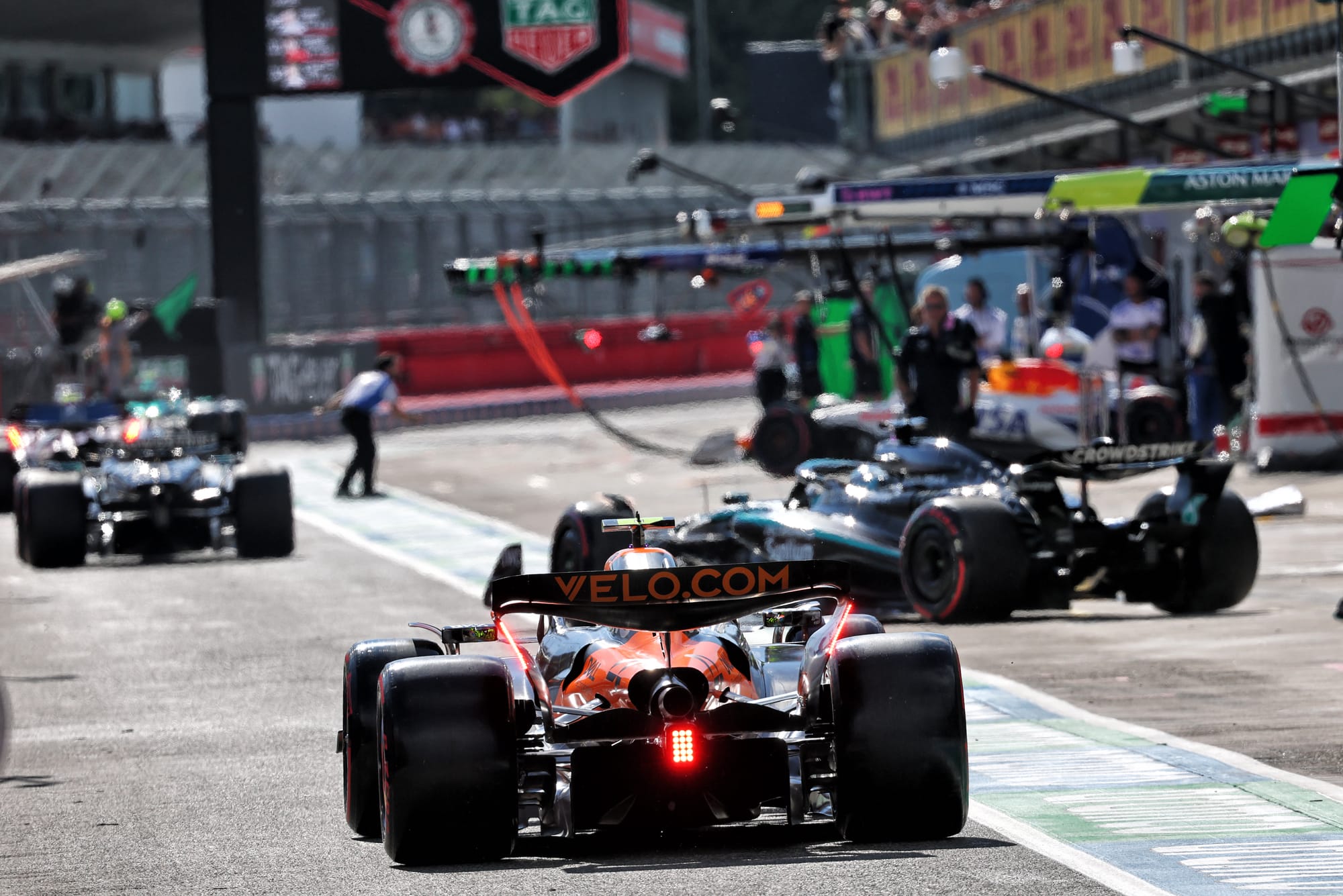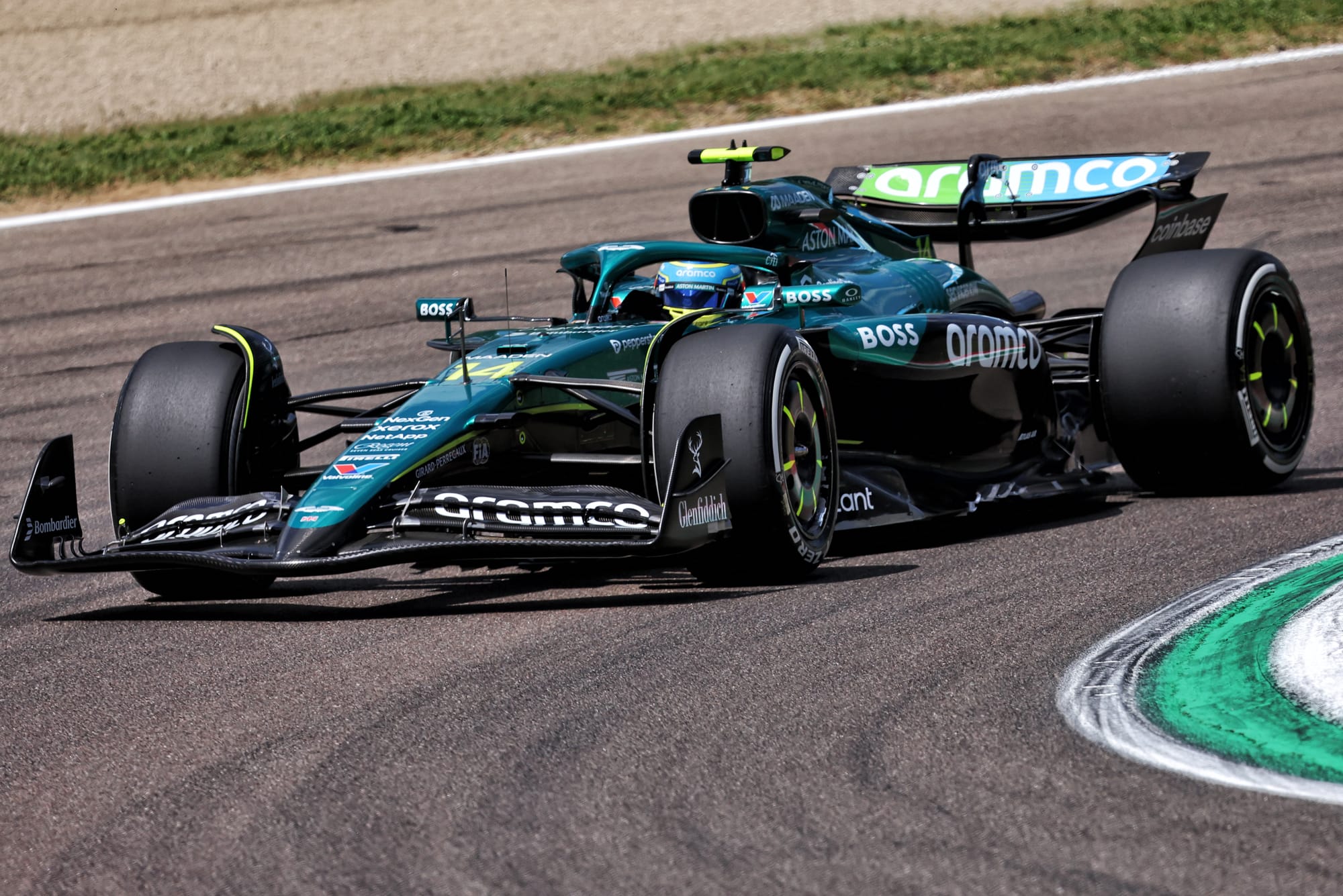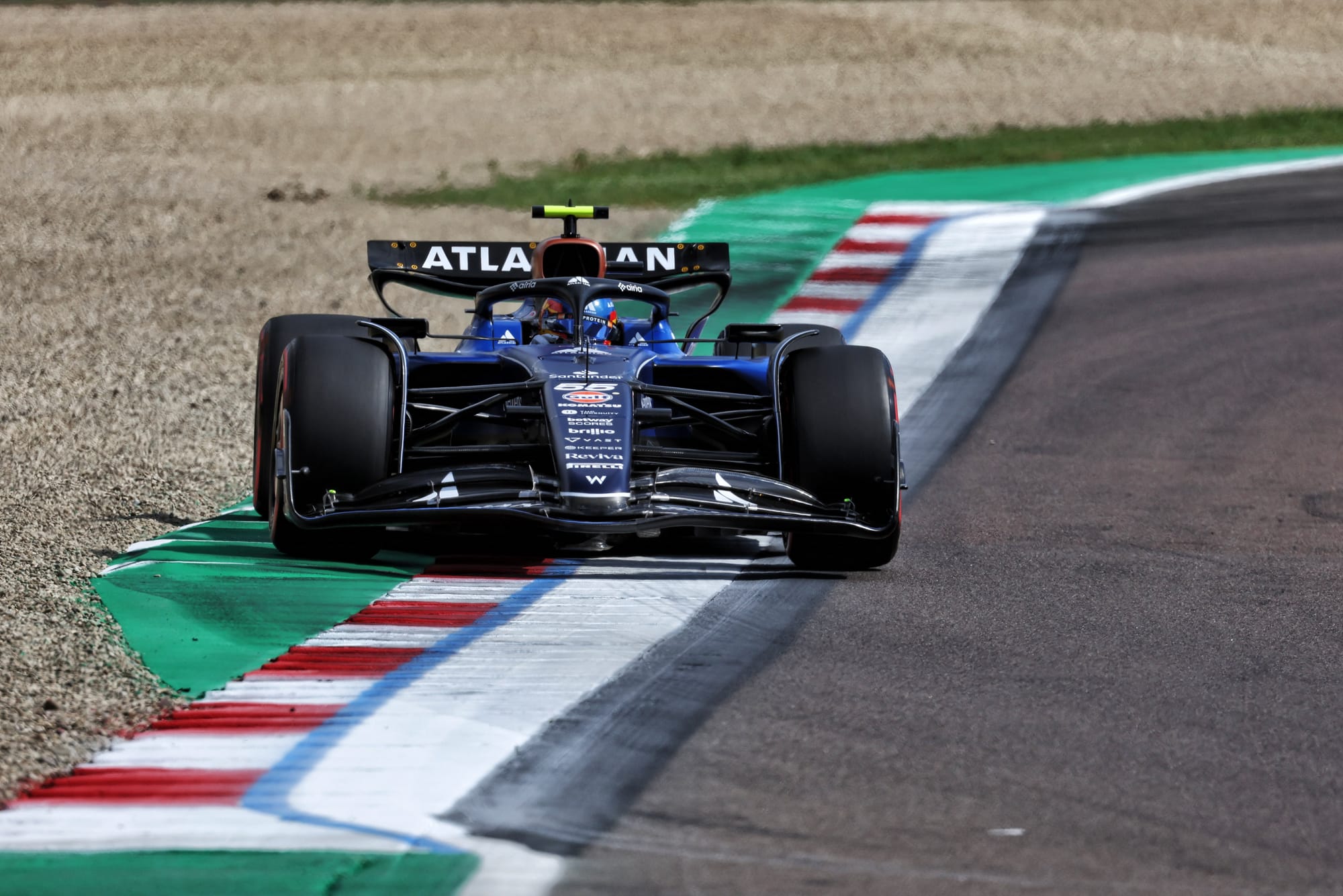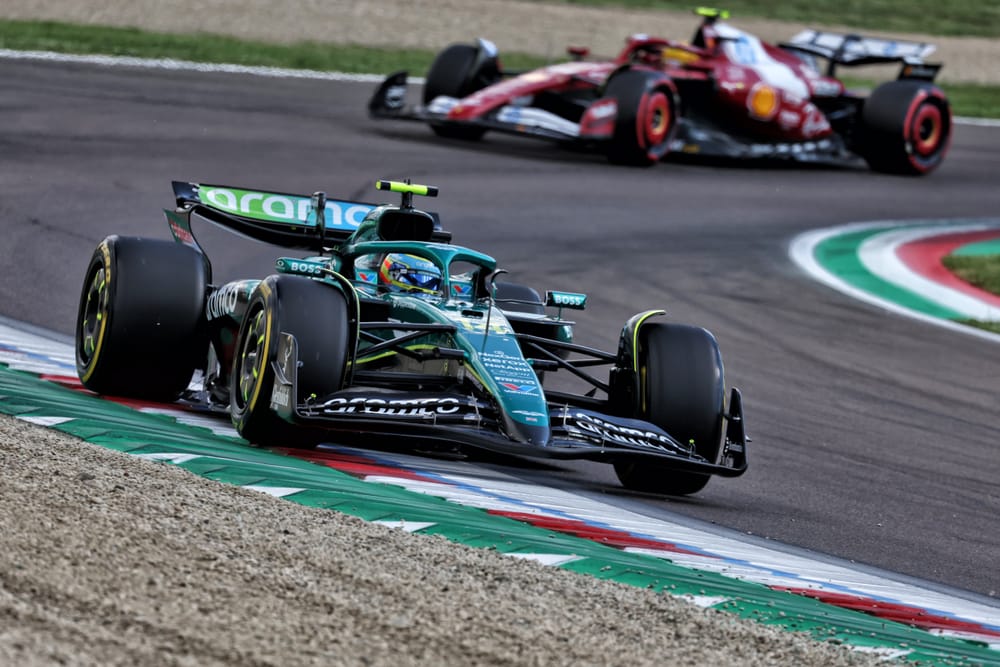Ferrari’s shock double Q2 exit at the Emilia Romagna Grand Prix left it as the biggest victim of one of the most unpredictable and fascinating qualifying sessions Formula 1 has delivered in a while.
The curveball of the medium tyre emerging as the better tyre over a single lap at Imola compared to the all-new ultra-aggressive C6 opened the door for Aston Martin to pull the rug from under Ferrari’s feet and dump it out early.
With Aston Martin having locked in using mediums for its final qualifying efforts on Friday night as it picked its sets, there was no scope for rivals to respond in time – with only Mercedes’ George Russell electing to roll the dice and burn up some laps of his race tyres late in Q3.
But while hindsight provides the 20/20 answer of what the best route was for grid positions, many teams were caught out by how things played out – and even Pirelli had no explanation for it.
For on Friday night, as Aston Martin committed to a strategy that helped Fernando Alonso to fifth and Lance Stroll eighth on the grid and would result in Ferrari licking its wounds, the consensus elsewhere in the pitlane had been that the soft C6 compound was not doing anything strange.
The C6 had proved to be 0.3-0.5s seconds quicker than the medium over a single lap and seemed nailed on to be the best choice for qualifying.
But, on Saturday morning, as teams bolted on their C6s for the end of session quali sims in final practice, the fact that the cars were not automatically faster than the mediums set some alarm bells ringing.
As McLaren team boss Andrea Stella said: "After Friday we were reassured that the C6 seemed to be a competitive tyre for qualifying, and we could therefore go for an allocation of four softs, one medium and two hards, rather than retaining two medium tyres.
"But looking at competitors, but also looking at ourself, the drivers kept saying that the best car they had [on Saturday] was the first run in FP3 on medium tyres.
"And then since we used the soft tyres, the balance fell a little bit apart. I think we are not the only ones suffering this kind of issue."
From Pirelli’s perspective, the impression from the outside was that things had changed on Saturday. Drivers generally complained more of understeer and the C6 was not delivering the step forward it had the day before.
But there was an element of mystery about why it did not perform as well on Saturday as Friday.
Pirelli’s motorsport director Mario Isola said: "It is not clear why they were complaining about this additional understeer compared to yesterday, because there are no elements to support this.
"We didn't have any rain overnight or anything strange, but the track seemed to be slower compared to yesterday, and everyone in general, as an average, we had this comment of additional understeer compared to yesterday. Yesterday, the limitation was the rear. Today, it seems that was more the front."
However, diving more into what happened, the factor that worked most against the C6 was not that its softness meant it overheated too much so fell out of the operating window at the end of the lap – but more that its softness meant it moved around too much and sapped drivers' confidence.

As Stella added: "The load on the tyres in Imola with these heavy and super-fast cars means that, even if the tyre offers a little bit of extra grip, it moves because it's just too soft."
The C6 had originally been intended for use at low energy street tracks such as Monaco, not venues such as Imola that features several high-speed corners that can produce peak forces of 5G.
So when drivers are pushing on the limit and need confidence in what the car is doing, any extra movement triggered by the soft compound can be a factor.
Pole position man Oscar Piastri reckoned that this handling quirk of the C6 was something that had only got exposed by drivers pushing more to the edge on Saturday.
"I think it's just us all going faster," he said. "Dropping the fuel, increasing the engine modes, pushing harder. You probably don't explore the limits of the tyre or overheat it as much [on Friday].
"But I think when you start to push things even further, the tyres eventually just gave up. They were struggling yesterday already, but today I think the C5 was faster than the C6, probably, or it certainly felt nicer.
"So, I think when you push it even further, you just expose the weakness of the tyre even more."
The element of this being about the feel of the C6 rather than it overheating and degrading over the lap is backed up by timing data – which shows that there was not a significant shift as the lap went on
Comparing Russell’s sector times on his Q3 soft and medium rums, even taking into account the time he lost in sector one as the result of making a gap to Carlos Sainz on his final preparation lap, it shows that the gains did not increase towards the end of the lap.
S1 S2 S3
NEW SOFT 23.674s 26.046s 25.319s
NEW MEDIUM 23.791s 25.815s 25.201s
A question of discipline?

With the benefit of hindsight, other teams may well have wished to go the medium tyre route – but that would have needed locking in before FP3 when teams needed to commit to their sets for qualifying and the race.
Aston Martin had made the call in running the hards during final practice, to have some freedom to use an extra medium in qualifying.
And, as Aston Martin team principal Andy Cowell revealed, having been told on Friday night by its tyre guru Jan Matsuzaki about the medium being a better one-lap tyre, its chief trackside officer Mike Krack nailed its flag to the mast before qualifying got underway.
Cowell told The Race: "It felt like the right thing to do. Nobody was arguing against it.
"Mike Krack managed it really well. He was very clear in the debrief after FP3, we need to make all the decisions now about what we're doing in qualifying, because in the heat of a qualifying session, it turns into a frantic, garbled mess on the pit wall. So he got it set up beautifully.
"He said this is Plan A, if this happens, then we step to Plan B. And I guess the only point where perhaps it wasn't so slick was actually in Q3 we were all perhaps a little bit surprised, and so we hadn't polished that plan quite as clearly.
"But Jan, the tyre engineer, had prioritised the three tyres in terms of performance, and that gave us the direction going into Q3 so pleasing to see."
Key now though will be whether those that went for the medium tyre route – such as Aston Martin and Mercedes – have compromised their races in using up some mileage on their race set mediums.

It was this factor that Sainz, who had topped Q2 on the C6 but starts sixth, said counted against Williams gunning for the medium in the final shootout for grid spots.
"We knew the medium was one or two tenths quicker," he said. "But as a team, we took the decision to stay disciplined, not use the one or two tenths quicker today in quali to have the new tyre tomorrow.
"Everyone that used it today will have to start with a used tyre tomorrow. We will see what it pays off, whether the last tenth or two in quali, or having one or two tenths of race pace, because the tyre is new."



